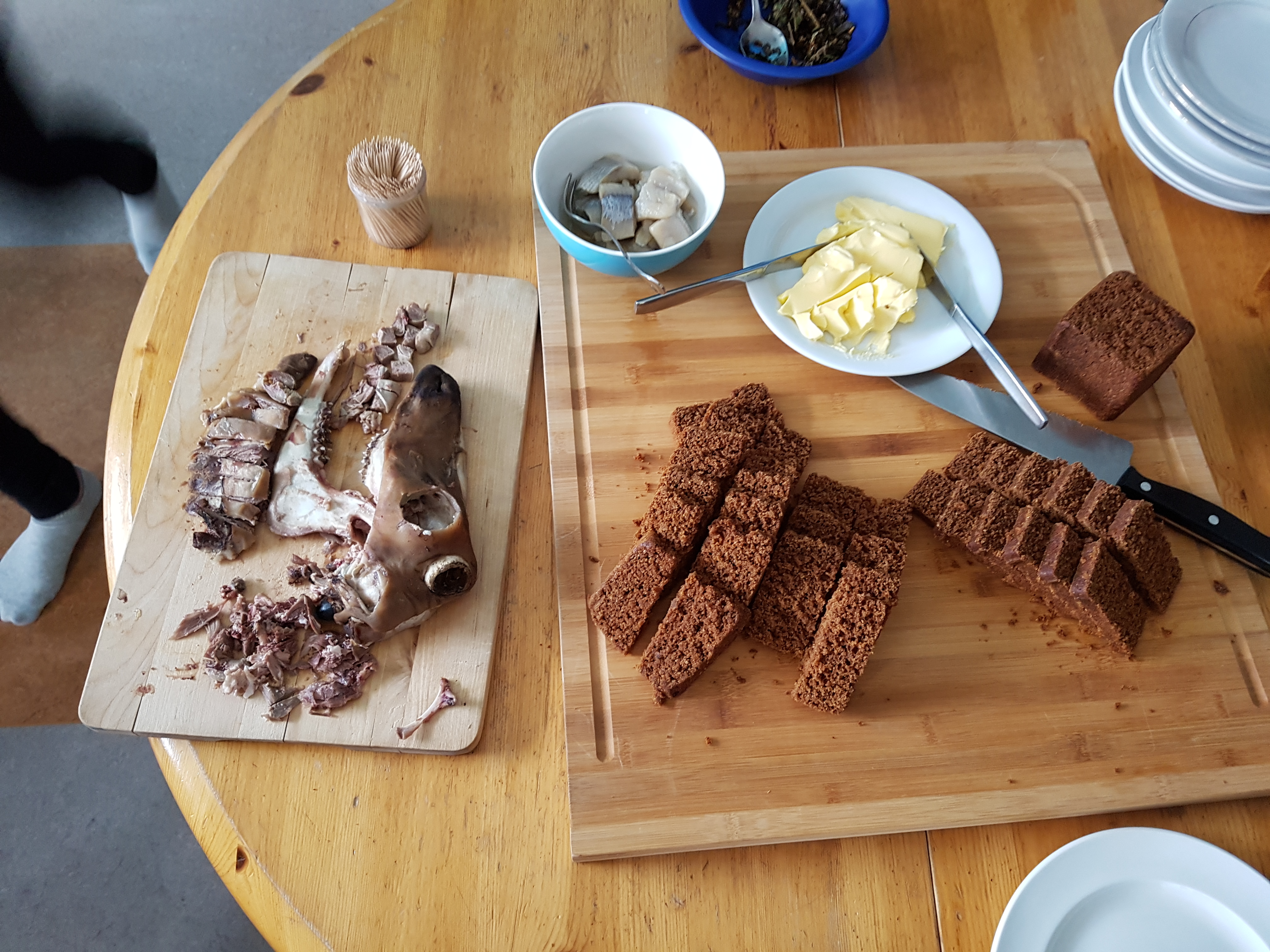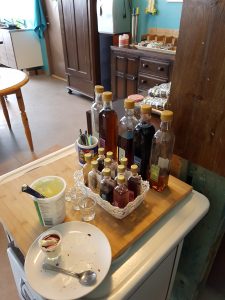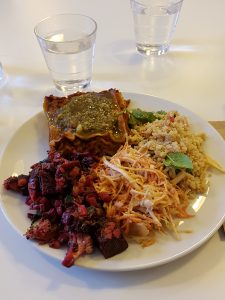Food independence and sustainability in Iceland
Historically Icelandic diets consisted of animal-based foods, where fishing and animal husbandry provided majority of the population’s livelihoods (3). Not only did Iceland lack fertile growing land for crops, they faced natural disasters that severely affected food supply. One such event occurred in 1783 where a volcanic eruption reduced livestock and resulted in 20% of the population dying in what is now referred to as the “Famine of the Haze” (3). Only when trade increased did the consumption of cereals and vegetables increase (3).

Changing Diets
Food consumption within the country has drastically changed over the past 50 years towards higher diversity and a heavy reliance on imported food, meanwhile food production has been diminishing (2). A recent analysis showed that Iceland is one of the most import-reliant countries, particularly for crop production (1). Concern for environmental impacts and the need for better food security has shifted food systems across the globe to become more focused on local food production (1). For a country as small as Iceland, local food production usually refers to any food produced in the country.
Food Security
In Iceland some of the major risks to food security include the following:
- Natural distasters – inhibits food production, transport, and affects health of crops and livestock
- Energy Shortage – disruption to energy sources create problem in food production and refridgeration
- Failure in distribution – a vulnerable road system may cause problems in distribution of food and cause food shortages in villages with lack of own food sources
- Financial factors – international economic and monetary crises can considerably affect Iceland, specifically with increasing food prices (2)


Becoming Independent
Despite the harsh natural growing conditions of Iceland, they have one resource as an ally – geothermal energy. The high availability of cheap geothermal energy and heat has allowed the development of heated greenhouses for food production in Iceland. Greenhouses produce many different crops, 50% of greenhouse area is used to produce vegetables and strawberries, 24% is for forest plants, and another 26% for potplants and cutflowers (4). Some of the most common greenhouse produce are tomatoes, bell peppers, cabbage, and cucumber, but some vegetable crops are still grown outside such as carrots, potatoes, cauliflower, and kale (5).
The Future of Food
Although greenhouses in Iceland only produce a small portion of the total food consumed domestically, it still provides a means of food security. Better technology and research into growing crops in greenhouses could open up new possibilities in expanding the types and amounts of food grown locally in Iceland. This in turn could decrease the dependence and associated risks with large-scale food importation. Although Iceland is unlikely to be able to go “off the grid” and become completely food independent due to demands for a wide range of diet, the country has the potential to decrease its carbon footprint through an increase in locally sourced foods.
Sources Cited
- Halldórsdóttir, Þórhildur Ósk, and Kimberly A. Nicholas. “Local Food in Iceland: Identifying Behavioral Barriers to Increased Production and Consumption.” Environmental Research Letters 11.11 (2016): 115004. Web. <http://iopscience.iop.org/article/10.1088/1748-9326/11/11/115004/pdf>.
- Bailes, Alyson J.K., and Orri Jóhannsson. “Food Security in Iceland.” Stjórnmál & Stjórnsýsla 2.7 (2011): 491-509.
- Jonsson, Gudmundur. “Changes in Food Consumption in Iceland, 1770â1940.” Scandinavian Economic History Review 46.1 (1998): 24-41.
- “Greenhouses.” Direct Utilization | Geothermal | National Energy Authority of Iceland. Orkustofnun, n.d. Web.<http://www.nea.is/geothermal/direct-utilization/greenhouses/>.
- “Icelandic Food Produce.” (n.d.): n. pag. Promote Iceland. Web. <http://www.iceland.is/files/food-press-kit-enska-agust-2014-rett.pdf>.

